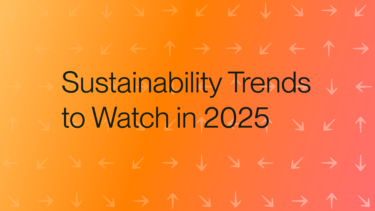Please note that the European Commission has released an update on an Omnibus Regulation, which may affect the information below. Among the potential changes are adjustments to the regulation’s scope, reporting thresholds, and some requirements. Updates will be provided once the details have been confirmed.
European Union regulations, which set out activities that help mitigate climate change, are a key tool for driving sustainable finance.
The European Union published the Regulation (EU) 2020/852 of the European Parliament and of the Council in June 2020 to establish a legal framework to facilitate sustainable investment. This standard contains system foundations for classifying sustainable economic activities from an environmental perspective; therefore, it is a key piece for the European Union’s Sustainable Finance Plan which seeks to channel business investment towards low-carbon activities.
The regulation, from an environmental perspective, considers that an activity is sustainable if it fulfils any of the following goals:
- climate change mitigation,
- adaptation to climate change,
- sustainable use and protection of water and marine resources,
- transition to a circular economy,
- pollution prevention and control,
- protection and recovery of biodiversity and ecosystems.
Known as “green taxonomy”, the document includes a list of 67 activities that help mitigate climate change and other criteria for determining whether a financial asset can be considered green. Accordingly, any company aiming to ensure their sustainability to its investors – or potential investors – will have to prove it through the EU regulation technical criteria.
To date, screening criteria for measuring compliance have only been set for the first two goals. However, it is expected that by the end of the year the EU will issue technical criteria for the rest of the established environmental goals. On August 3, 2021, the Platform on Sustainable Finance published a draft report on preliminary recommendations for technical screening criteria for the EU taxonomy, currently in consultation process until the September 24, 2021.
In addition, for any activity to be considered sustainable or green, it cannot cause any significant damage to any of the aforementioned goals, and it must be developed in compliance with minimum guarantees or recommendations to exercise responsible investment – i.e., in accordance with the OECD Guidelines for Multinational Enterprises or the UN Guiding Principles on Business and Human Rights.
Regulation implementation dates are very ambitious, and the text is subject to possible changes resulting from negotiations between Member States. However, by January 1, 2022, all financial market agents must report activities carried out in the previous year that contributed substantially to climate change mitigation and/or adaptation. Moreover, starting in 2022, companies will also have to report turnover, investment, and expenses percentages in relation to green taxonomy following the two initial goals (mitigation and adaptation to climate change). The rest of the established environmental goals are expected to be included by 2023.
Green taxonomy is now taking its first steps, and some leading experts state there is still a long way to go. However, the EU has already announced a social taxonomy by the end of 2021 that will classify activities with a substantial contribution to social goals; on this note, on July 12, 2021, a first draft on social taxonomy was published. It is important to state that this new regulation aims to define which activities promote social benefits – such as decent work or access to affordable health care, among others – thus making it easier for investors to make decisions on sustainable finance.
At Anthesis we work hand in hand with our clients to help them align their activities with the Green Taxonomy established requirements. We collaborate with both financial institutions and companies, offering our support in their application and compliance with European regulations, helping them define opportunities and minimising future possible risks.
Get in touch
Related Content
Get in touch
We’d love to hear from you
We are the world’s leading purpose driven, digitally enabled, science-based activator. And always welcome inquiries and partnerships to drive positive change together.










